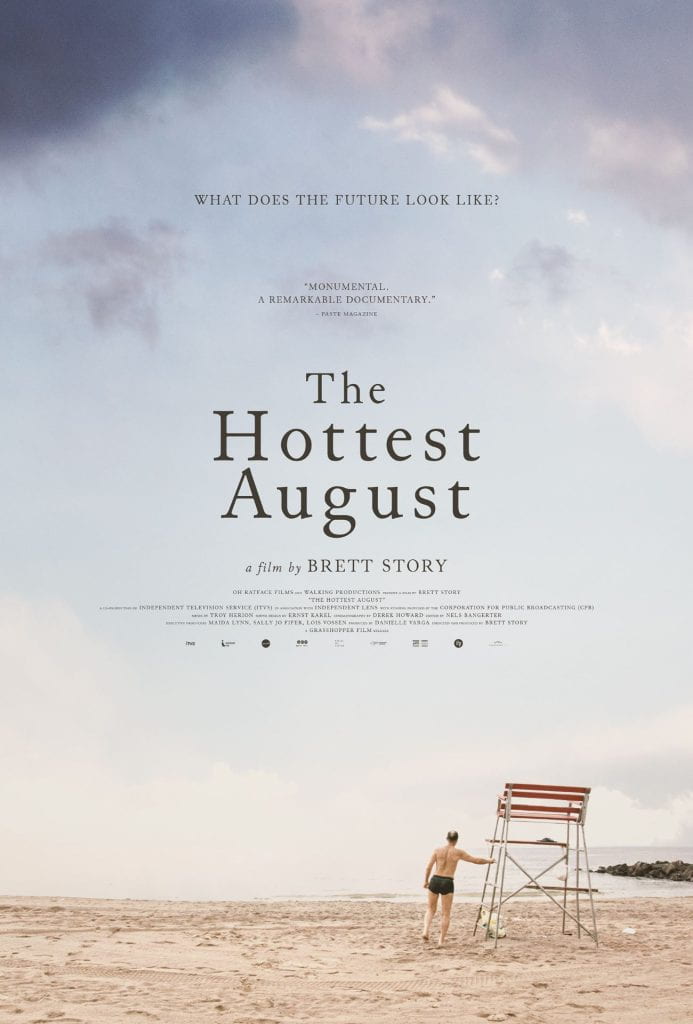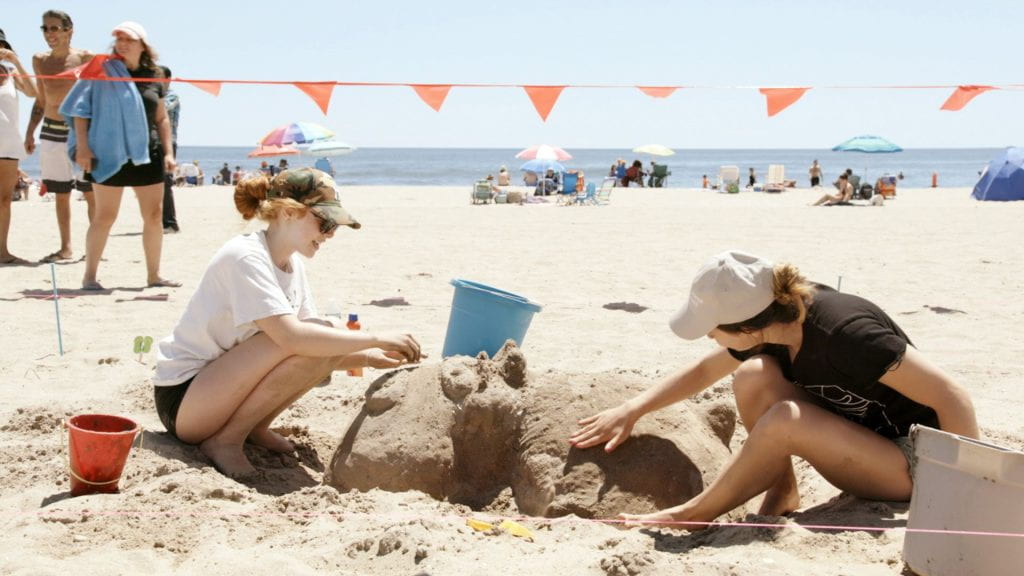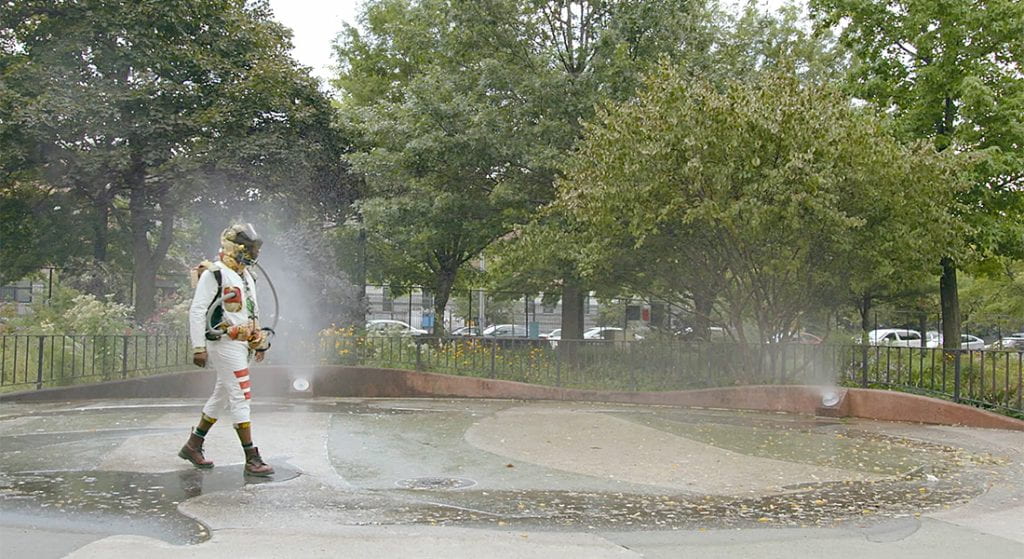
Poster for The Hottest August
Noni Ford discusses the acclaimed documentary The Hottest August and its unique snapshot of humanity circa New York 2017.
Filmed pre-pandemic, Brett Story’s The Hottest August captures brief snatches of conversation in the lives of New Yorkers in the summer of 2017. Through stories, anecdotes, musings, and memories, people reveal the changes that have affected America and how they feel a shift in society in their own lives. Although this footage was captured seven years ago, it seems like a completely different time. Part of the movie is really acknowledging the unease and exasperation felt amongst its subjects, and part of it is a reflection of the changing world we were living in then and still living in now.
Not everyone enjoys talking about themselves or their opinions in public settings, but Story can find a wider swath of engagement by meeting people where they’re at. Most subjects are in public settings, but they can be as varied as a sidewalk or in front of storage lockers. As Story probes participants with questions – some of which you hear, but with the majority being edited out so you can only guess at the question given the response — they open up. Everyone wants to talk because the things that are happening around them are scary; as the world shifts around them — a neighborhood’s population changing, natural disasters, money woes, divisive politics — all most people seem to think they can do is talk and try to grasp at some since of equilibrium. Neighborhoods, mentalities, and the environment are changing rapidly and not everyone feels they fit into this future coming for them.

Still on the beach from The Hottest August
Rather than just feature one type of respondent or one neighborhood’s story and history, the documentary goes out to find different voices, different in economic status, age, and optimism so you can see what is shared between these communities and what is specific to someone’s lived experience. I found the portion that focused on two women who had endured Hurricane Sandy effective in tying in a discussion of global warming and emotional tolls, as one of the women talks about her family’s past and her reticence to move away from the area she grew up in.
Another stand-out interview featured a subject in his later teens and on the cusp of adulthood talking about the way he saw the world now that he began working for his future. Staying positive and aware of how he must make a living to afford his way in the world, he also has a very realistic snapshot of how society works as he remarks on the barriers some have while those with money have it easy in their life transitions. There’s no bitterness in his words, but he is clearly paying attention to these things and the circumstances that will make his life more challenging as he continues to grow.

Still from The Hottest August
The biggest strength of the documentary is that no one specifically tells you what to think with the information you are receiving. The stories are not trying to convince you of thinking one way or the other, the audiences are responsible for making meaning of what’s on screen. While there’s a narrator whose voice comes in at intervals, the speeches that are given tend to lean more towards poetic language than clarifying statements. What we’re being given over the course of this film are stories and people, a snapshot of a time and place, not a benchmark or a lesson. It’s on you to take what you can and make meaning of where America, the United States, North America, and humanity are going and how will we continue adapting to the evolving environment and society.
The Hottest August will be screened at IU Cinema on March 22 at 7pm with filmmaker Brett Story in attendance. On March 23, Story will also be present for a 4pm screening of her film The Prison in Twelve Landscapes and a 7pm onstage conversation as part of the Jorgensen Guest Filmmaker Series and the Care Not Cages series.